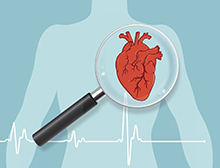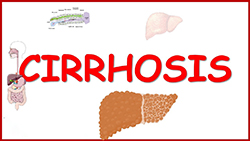The most common heart diseases are ischemic heart disease (IHD), congenital heart disease, arrhythmia, and dilated cardiomyopathy.
Ischemic heart disease:
IHD, also known as coronary artery disease, refers to a group of diseases that cause myocardial ischemia (reduced blood flow to the heart muscle) due to blockage of the coronary arteries that supply the heart muscle layer. IHD is the leading cause of death in the United States. These diseases include:
(i) Angina:
Stable, unstable, and primary angina pectoris are chest pain caused by exertion, chest pain at rest or occasional, and chest pain without exertion, respectively.
(ii) Myocardial infarction (heart attack)
As the name suggests, MI is myocardial necrosis caused by thrombosis (blood clot formation) due to rupture of atherosclerotic plaque and ischemia caused by complete occlusion of coronary arteries.
Congenital heart disease:

These are a person's birth defects, which occur in the 3rd to 8th weeks of development and cause shunting (mixing) of the systemic and pulmonary circulation. These include:
1. Patent ductus arteriosus: The communication between the aorta and the pulmonary artery is not closed after birth, and blood is shunted (mixed) from the aorta to the pulmonary artery.
2. Atrial and ventricular septal defect (respectively in the hole between the two atria and the ventricle)
3. Tetralogy of Fallot: The defects are: ventricular septal defect, right ventricular hypertrophy and the aorta located above the ventricular septal defect.
4. Pulmonary valve stenosis: Pulmonary valve stenosis is called pulmonary valve stenosis. The pulmonary valve is located between the right ventricle and the pulmonary trunk. The valve becomes stiff and the blood flow through the valve decreases. The condition is congenital or acquired.
Arrhythmia:
Arrhythmia refers to a group of diseases in which heart rate changes and sinus rhythm deviations. The normal heart rate is 60-100 beats per minute. A heart rate above 100 is called tachyarrhythmia, and a heart rate below 60 is called bradyarrhythmia. Arrhythmia can appear asymptomatic or cause sudden death. The main types of arrhythmia are:
1. Supraventricular arrhythmia
2. Ventricular arrhythmia
3. Bradycardia
4. Ectopic heartbeat
Dilated cardiomyopathy:
It is a myocardial disease characterized by dilation of the atria and ventricles. Systolic dysfunction occurs, leading to biventricular congestive heart failure. The complications are:
(i) Arrhythmia
(ii) Mitral and tricuspid regurgitation
Signs and symptoms of common heart disease:
Ischemic heart disease:
1. Angina:
(i) Stable angina: burning, heaviness, or squeezing in the chest.
(ii) Unstable angina: chest pain is more common
(iii) Prinzmetal angina: pain at rest and onset
2. Myocardial infarction:
(i) Severe, crushing chest pain
(ii) Excessive sweating (sweating)
(iii) Pain lasts 20 minutes longer
(iv) Pain radiates to the left arm/chin
(v) Difficulty breathing (dyspnea)
Congenital heart disease:
1. Patent ductus arteriosus:
(i) Shortness of breath (shortness of breath)
(ii) Cyanosis (the skin turns blue due to impaired oxygenation due to blood shunting)
(iii) Repeated respiratory infections
2. Atrial septal defect:
(i) Arrhythmia
(ii) Signs and symptoms of abnormal emboli
(iii) Pain when tired
(iv) Syncope (fainting)
3. Ventricular septal defect:
(i) Symptoms of Eisenmenger syndrome (clubbing, cyanosis and chest pain)
4. Pulmonary valve stenosis:
(i) Pain when tired
(ii) Syncope
(iii) Cyanosis
(iv) Systolic ejection murmur
Arrhythmia:

(i) Irregular heart rate (slow or fast)
(ii) Difficulty breathing
(iii) Feeling fluttering
(iv) Nausea and syncope.
Dilated cardiomyopathy:
(i) Arrhythmia
(ii) Syncope
(3) Palpitations
Reasons for developing heart disease:
1. Ischemic heart disease:
(i) Atherosclerosis is the most common cause
(ii) Hypertension
(iii) Genetics
(iv) Diabetes (due to non-enzymatic glycosylation of blood vessels and atherosclerosis)
(v) Obesity
(vi) Renal failure (causing high blood pressure)
2. Congenital heart disease:
(i) Mainly ideological
(ii) Genetics
3. Arrhythmia:
(i) Central nervous system stimulants (cocaine, methamphetamine, methylphenidate, etc.) and other drugs
(ii) Dilated cardiomyopathy
(iii) Atrial septal defect
(iv) Pulmonary valve stenosis
4. Dilated cardiomyopathy:
(i) Alcohol
(ii) pregnancy
(iii) Drugs (central nervous system stimulants and doxorubicin)
(iv) Myocarditis
Treatment of common heart disease:
Use of organic nitrates (nitroglycerin), beta-blockers, and antihypertensive calcium channel blockers (nefidipine, amlodipine, isradipine) to treat ischemic heart disease, such as angina and MI . The treatment of congenital heart disease includes surgery, heart transplantation and medication. Arrhythmia is treated with four main types of antiarrhythmic drugs (sodium channel blockers, β-blockers, potassium channel blockers, and calcium channel blockers) and other drugs. The treatment of dilated cardiomyopathy involves a variety of drugs, including antihypertensive drugs, such as angiotensin receptor inhibitors alone or with scubitril (valsartan is the only ACE inhibitor used in this case) and beta receptors Blockers are used in combination.




